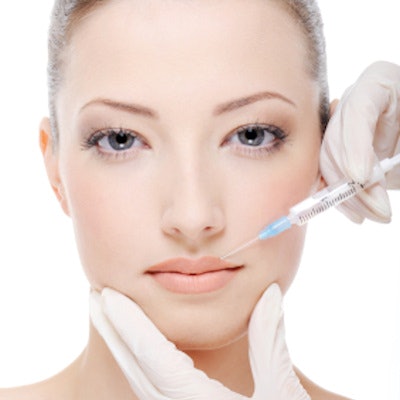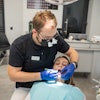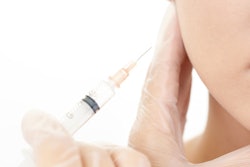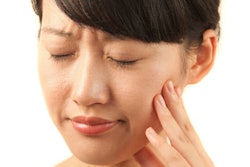
The goal when treating patients with temporomandibular disorder (TMD) is to relieve their symptoms and help them regain jaw movements. An injection of botulinum toxin type A (Botox-A) may help when conservative treatments are not successful, according to a small study.
The researchers first treated patients with muscular TMD with a regimen of pharmaceuticals, physical therapy, and occlusal splint therapy. When that regimen did not succeed, they used Botox-A in patients with success, according to the study published in the Journal of Stomatology, Oral and Maxillofacial Surgery (February 23, 2019).
"Botulinum toxin injection for the treatment of muscular temporomandibular joint disorder is a viable treatment option in the case of patients who do not respond to conservative treatment methods," wrote the authors, led by Aylin Sipahi Calis, PhD, of the oral surgery department at the Ege University Faculty of Dentistry in İzmir, Turkey.
Pain reduction
Botulinum toxin has been used as a therapeutic option to relieve pain and help in functional recovery from dental and oral and maxillofacial surgery along with nondental healthcare applications. In patients with bruxism, treatment with botulinum toxin can relieve pain by reducing inflammation.
“Botulinum toxin injection for the treatment of muscular temporomandibular joint disorder is a viable treatment option.”
The researchers of the current study wanted to see if Botox-A injection was a useful treatment in patients with muscular TMD.
The study included 25 patients with muscular dysfunction out of more than 200 patients with TMD who applied to participate. All 25 patients were initially treated with a regimen of pharmaceuticals, physical therapy, and occlusal splint therapy. The pharmaceutical regimen included an analgesic anti-inflammatory medication (Xefo 8-mg film-coated tablet, Abdi Ibraham), muscle relaxants (Sirdalud 2-mg tablet, Novartis), and an antidepressant (Laroxyl 10 mg, Roche).
This regimen resolved the symptoms of 16 of the patients. The nine patients (five females) who found no relief after three months were given a total of 100 units of Botox-A on both sides of the face, including 30 units in the masseter muscle and 20 units in the temporal muscle. The researchers checked each patient for xerostomia, jaw weakness, difficulty chewing, and cosmetic side effects.
Before and three weeks after injection (when the drug is at its most effective), they took measurements for bite force, pain, and mouth openness for the patients who received the injections.
Bite force decreased in four patients, increased in three patients, and remained the same in two patients after Botox-A treatment, which the researchers stated was not significant. Mouth openness was reduced in two patients, increased in six patients, and did not change in the case of one patient, again not statistically significant.
However, the researchers reported a significant reduction in pain (p < 0.05). In addition, they found no signs of xerostomia, jaw weakness, difficulty chewing, or cosmetic side effects at six-month follow-up.
Effective treatment
The authors noted that their study had a small number of patients and that an evaluation of a large sample of patients would make the results of the study more meaningful. They also added that the relatively high cost of Botox-A may limit the study possibilities.
However, the advantages of Botox-A -- minimally invasive intervention, short application time, low pain levels during application, and low risk of complications -- make it an effective treatment method in patients who do not respond to more conservative treatments, the authors concluded.
"We are of the opinion that it is useful to use this substance, which is widely used in cosmetics, in the treatment of temporomandibular joint diseases of muscular origin," they wrote.



















